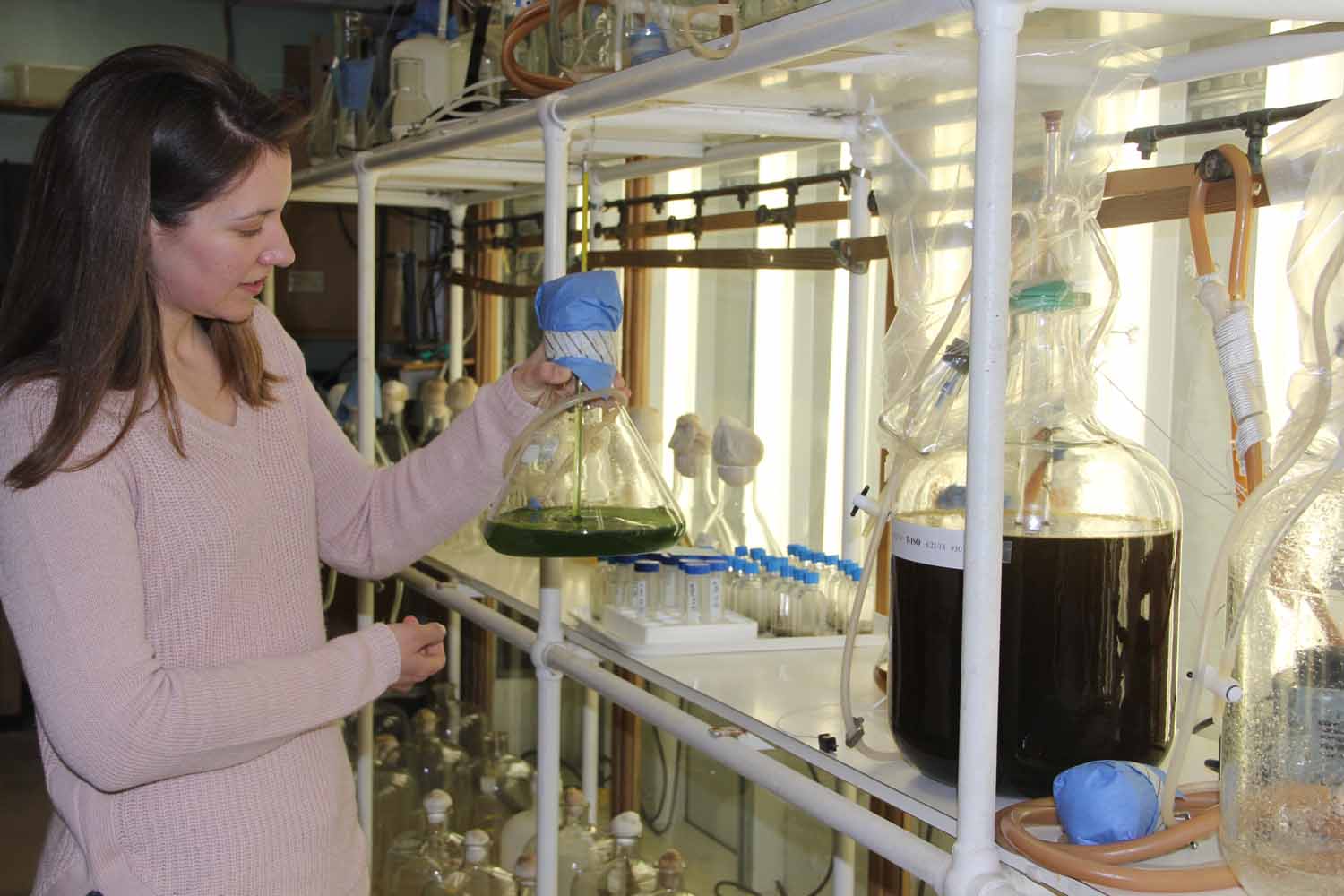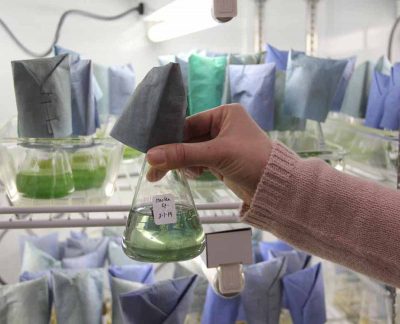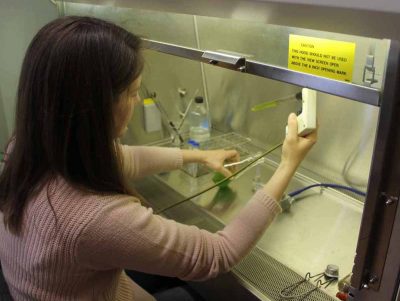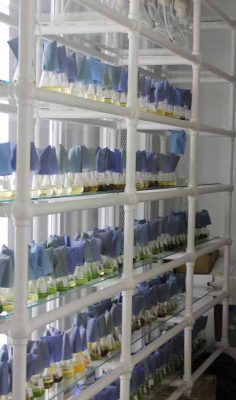
Story and photos by Judy Benson
At the Fishers Island Oyster Farm, a UPS delivery this winter from one of the world’s leading sources of the essential food for the commercial shellfish industry is now helping sustain the millions of young oysters growing in its hatchery.
“We’ve got about 50 million larvae and 10 million post-set oysters now in the hatchery,” oyster farm owner Steve Malinowski said during a phone interview in mid-May. “By June everything will be out in the field.”
The majority of the 60 million oysters raised by the farm annually are sold as seed to other farms. The remainder are raised in cages offshore from the small island, a part of New York State located at the eastern end of Long Island Sound. All of the crop, though, depends on getting the right mixture of disease- and pest-free algae for its early life stages in the hatchery.
A main supplier of that algae to Malinowski and other shellfish farmers along the Atlantic, Pacific and Gulf coasts – and even worldwide – is located 65 miles from his farm in the Connecticut coastal town of Milford. Known to the industry as “the Milford lab,” the National Oceanic and Atmospheric Administration’s Northeast Fisheries Science Center has supplied algae free of charge to shellfish farms for more than five decades, drawing from collection of 230 strains, among them those that are most important for young oysters and clams. The single-celled microalgae is provided in vials of starter culture – a small amount hatcheries use to cultivate the larger quantities needed for the entire growing season.

“Most hatcheries require starter culture every year, because it’s more cost effective for them to get a new batch at the start of each season,” said Lisa Guy, curator of Milford lab’s microalgal collection. “It’s a free service NOAA provides.”
Guy came to the position in September from the Horn Point Lab Oyster Hatchery in Maryland, taking on her new role with a sense of pride in the legacy she’s helping to perpetuate.
“This is a very critical role, to maintain this collection that was started in the 1950s,” she said, as she showed the refrigeration rooms where beakers of microalgae in shades from bright green to mud brown to gold line the shelves. “Almost all of the cultures I send out go to the United States, but we do also send to the Bahamas, Australia, Sweden, Germany and France. I knew the importance of this collection. That’s what drew me to this job.”
The 500 names on the customer list for the microalgal cultures generate about 350 orders annually. Many farms request multiple strains of algae, to ensure their crop gets the right balance of lipids, carbohydrates and other nutrients throughout its life cycle.
“This is the only collection (nationwide) that has this many strains that are bacteria- and fungus-free,” Guy said.
Tessa Getchis, aquaculture extension specialist at Connecticut Sea Grant, touted the Milford lab for their dedication to the growth of aquaculture. She mentioned that through the years, the Milford lab has been quick to respond to the needs of the shellfish industry.
“Whey myself or others communicate an emerging need,” she said, “they find an innovative way to address it.”


That includes one project that analyzed the environmental impact of dredging to harvest shellfish from offshore beds, and another to study how marine animals use shellfish cages as habitat. Research done by the lab has also identified the strains of algae best suited to different states of shellfish growth in different water and temperature conditions, she added.
The lab is critical to the shellfish industry, she said, both for the algal collection and for the training it provides shellfish farmers in how to grow microalgae from the starter culture it provides. The hands-on training classes are offered periodically at the lab, and advice is available from lab at any time.
“There are very few places you can get training in algal culture,” Getchis said. “It’s not something you can learn easily from a book.”
Because most shellfish hatcheries are small and seasonal, Getchis said, keeping algal cultures growing through fall and early winter isn’t cost effective for them.
“And single-celled algae cultures are easily contaminated,” she said.
Even hatcheries that do maintain their own algal cultures depend on supplemental supply from the Milford lab.
Taras Pleskun, co-hatchery manager for the Noank Aquaculture Cooperative in Groton, calls microalgae basically “baby formula” for young oysters in the hatchery, before they’re ready to be set out in in the natural environment to filter their own algae from marine waters. The hatchery grows most of its own algae, he said, but turns to the Milford lab when it needs to.
“The Milford lab is a tremendous safety net for us,” he said. “I go to the Milford lab if something happens to my stocks, if they get contaminated with pests. I also get starter stocks there when I want a new species. The more strains you have, the better opportunity you have to find strains that play ball in your water.”
Algae from the wild, Pleskun said, must be “domesticated” in a lab environment before it can be successfully used in a hatchery. That makes the cultures developed and maintained by the Milford lab a “foundational asset” for the wellbeing of the entire shellfish industry, he said.
It’s also essential for the industry’s ability to grow, Getchis and Malinowski both said.
“It’s very important to the industry’s growth,” Malinowski said.
Judy Benson is the communications coordinator for Connecticut Sea Grant.